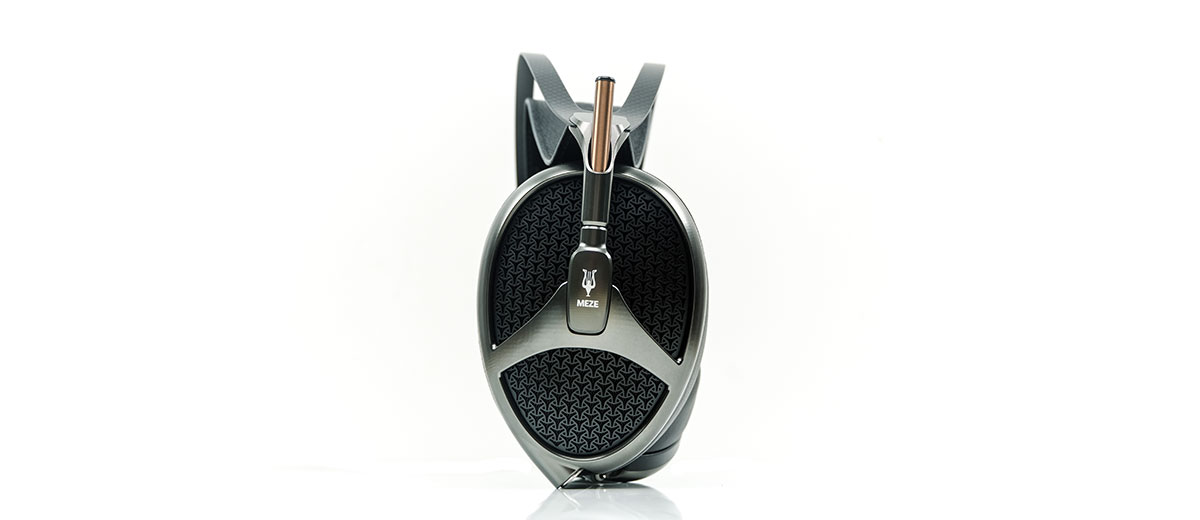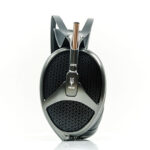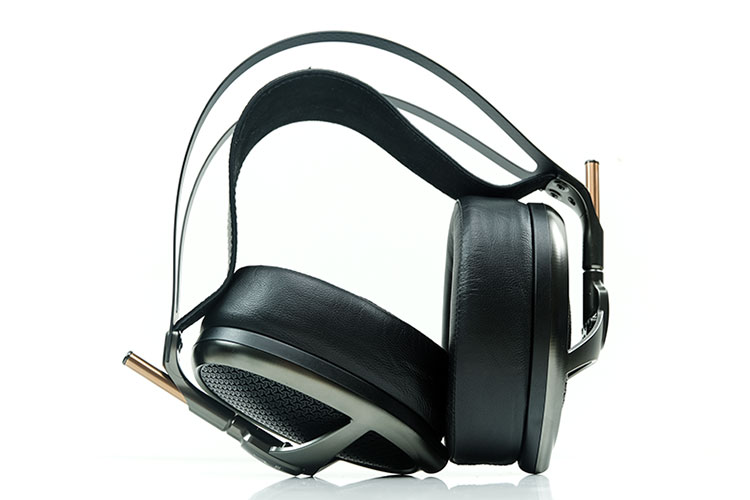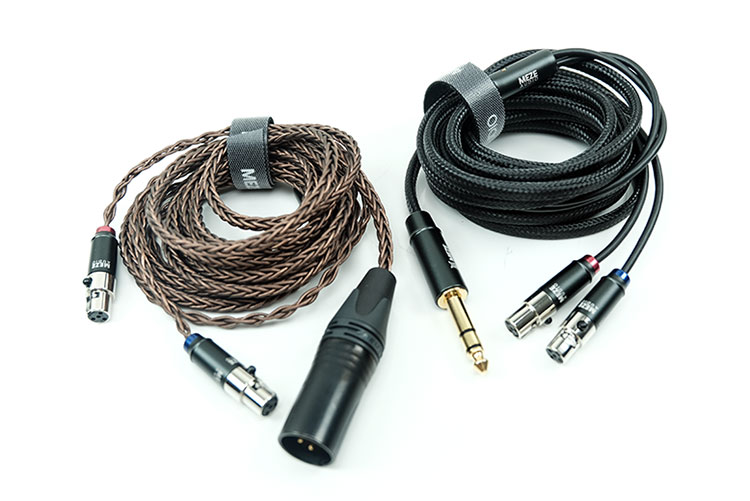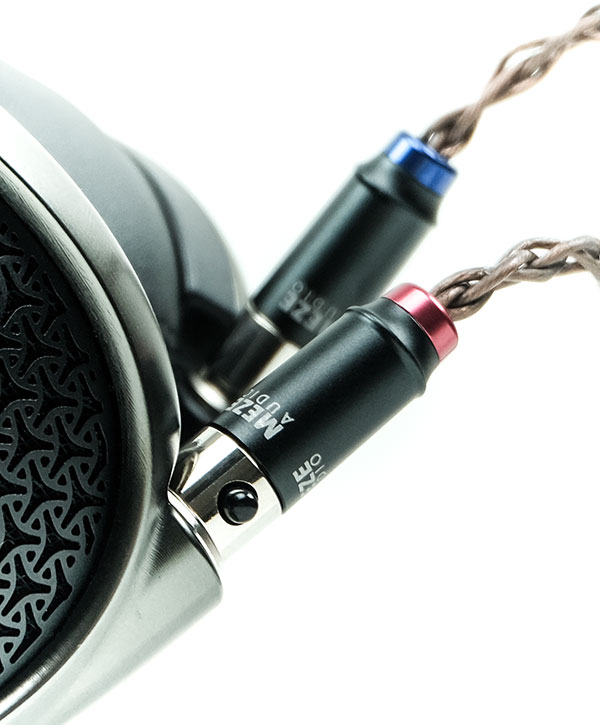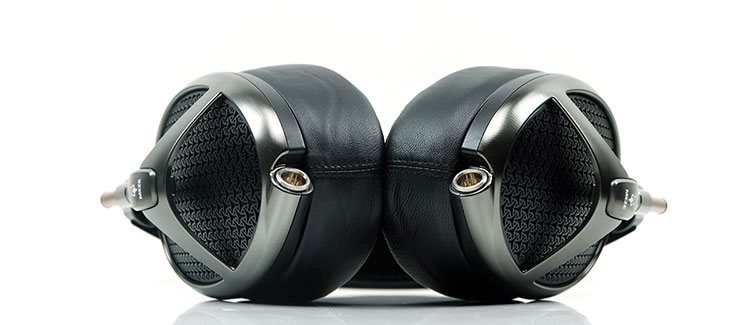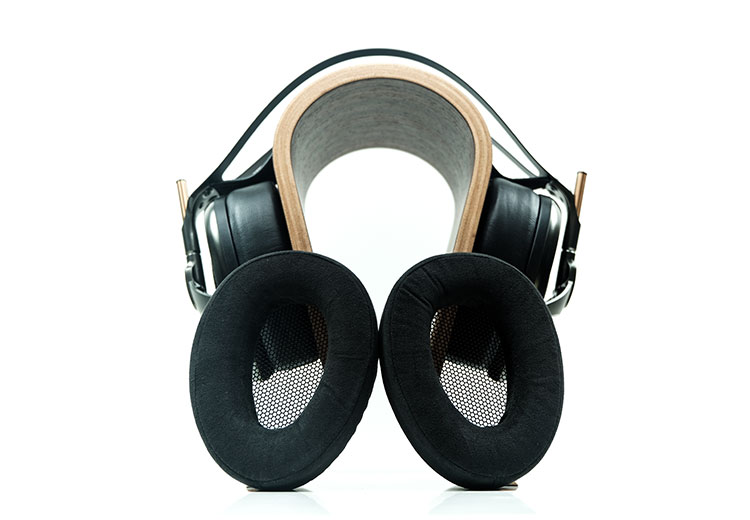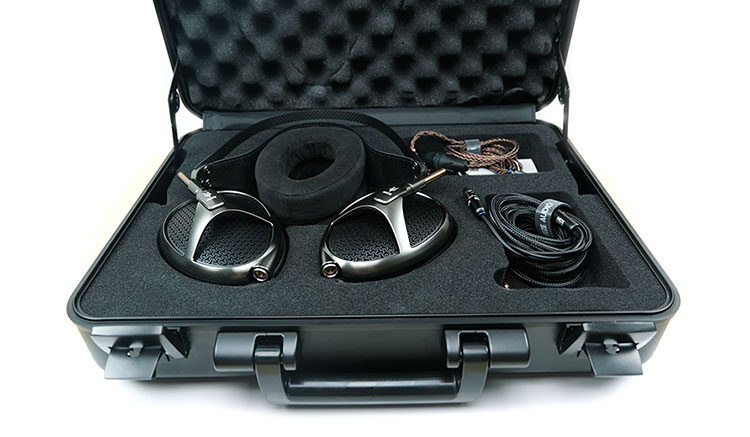In today’s review, we cover the Meze Audio Empyrean which is the company’s brand new flagship isodynamic hybrid array open-back full-sized headphone. It is priced at $2999.
Disclaimer: This sample was bought by us and does not need to be returned. Headfonics is an independent website with no affiliate links or partnerships. We thank Meze for their support
To learn more about Meze Audio products previously featured on Headfonics you can click here.
Note, that this article follows our latest scoring guidelines which you can read up on here.
The normal approach to headphone design and production is to create something you think is good and then use that framework to create something you think is better than before. Quite often the gap between good and better is incremental or evolutionary.
Typical moves include an open or closed-back version, new technology to improve driver performance, or perhaps a cosmetic overhaul to reduce weight.
It is very rare for a company to hit the market with something new that is a complete break from anything they have done before without it being an OEM rebadged for easy market entry. That requires a certain skillset or at the very least a partnership with a range of skills that harmonize with a certain vision.
Step forward Meze Audio and Rinaro Isodynamics and their flagship creation, the isodynamic hybrid array headphone, the Empyrean. This is a massive step up on the Classics and Neo mid-fi dynamic driver headphones. A step in both design, technology, and ambition.
At $2999, this creation places Meze right into the flagship zone, the big boys if you will. You best get it right, you best be better than most people imagine it to be. Does it meet all that? You are damn right it does!
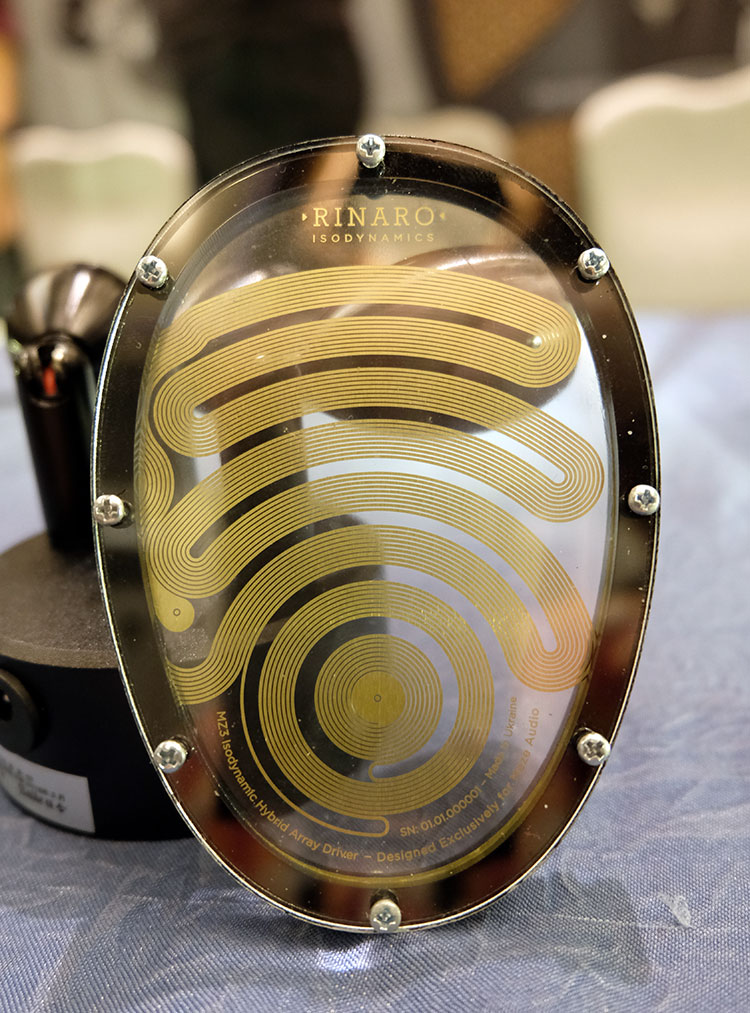
Tech Highlights
New Driver
At the heart of the Empyrean is an isodynamic hybrid array driver. The diaphragm design is incredibly unique with a specific purpose in the shape and flow.
This is a continuous trace but with two unique shapes. At the top, is a curved line switchback trace which focuses on the low-end delivery (bass), and the circular pattern at the bottom, is designed to focus on the mids and highs.
Now the positioning of the trace is such to get that circular pattern directly over your ear. In doing so there should be a qualitative reduction in non-reflected soundwaves, and an improved perception of imaging, and better staging.
The hybrid aspect of the design can be found in how Meze and Rinaro arranged the magnets on either side of the diaphragm. The symmetrical placement of the neodymium magnets on either side is to maximize the efficiency of the isodynamic magnetic field.
Ideally, the diaphragm will operate in a uniform and consistent manner as a result. This is critical given the dual trace design of the diaphragm for both lows and highs.
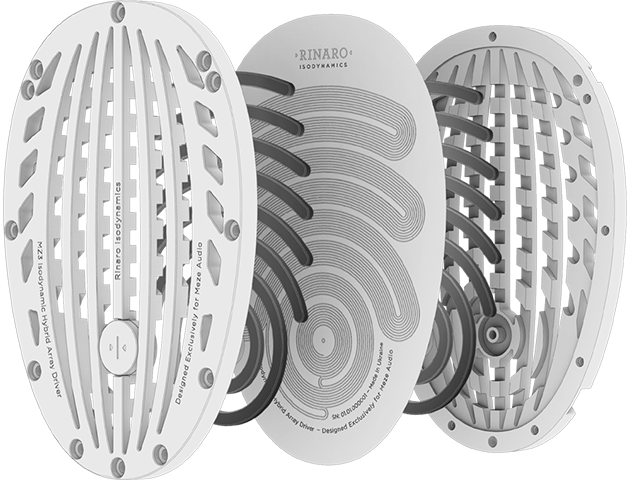
Technology On The Outside
The Empyrean also has a few tricks up its sleeve beyond the core driver design that has a huge effect on its core signature.
For example, the detachable pads on the Empyrean, in both leather and Alcantara contain an isodynamic magnetic alignment system that forms part of the final tuning and performance of the hybrid diaphragm rather than just providing the usual seal and comfort.
The Rinaro CEO, Pavlo Shymanovych, explained to me during CanJam Singapore 2018 that patented ferromagnetic plates channel the demagnetizing field back into the driver increasing efficiency by 1db or 12% and deflecting 95% of stray fields away from the head.
The differing materials also naturally adjust the sound beyond the technical aspect of the magnets at the base. The change is not subtle either and I suspect there will be quite a few who prefer one pad over the other.
Design
Form Factor
The Empyrean is a full-sized circumaural open-back headphone design. It weighs in at 430g so not the lightest of planar magnetic headphones on the market today but its form factor has an amazing level of pressure distribution making it one of the comfiest to wear. More about that later.
The most dominating aspect of this boutique form factor is those beautiful ovoid cups adorned with an almost Persian-flavored intricate dark grill pattern housed in a slightly lighter gunmetal housing.
Close up or under spotlight conditions, you can really see how much attention to detail has been paid to the CNC milling of each ‘triangular’ cut. It is just about as flawless as you can get.
The ovoid design is also part of Meze and Rinaro’s deeper approach to reducing the weight of the Empyrean. Given its double magnet driver design, the Empyrean could so easily have shot up to a 600g weighting like the LCD-4.
Going ovoid over circular allows a closer fit to the ear and uses less surface area such as that required by traditional planar magnetic designs.
Materials & Finishing
The shape is technically not a million miles away from Meze’s favored elongated twin-rod and pressure-adjusting leather-strap headband system used on the 99 Classics and the Neo. However, the finish and materials used on the Empyrean are a big step up from its smaller siblings.
For a start, the headband arch is constructed from a lightweight carbon fiber material as opposed to spring steel to keep it supple yet very light at the same time.
The leather strap is also a ‘patented suspension wings design’. What this means is that it is purposely ‘kinked’ to wrap around your head broadening the contact point on your scalp and thus dispersing the pressure evenly.
Why has no one else thought of this before? Or have they and I have yet to see it? Either way, this bending shape is so much better than traditional narrow contact point bands.
Gimbal & Pivot 360
The cup gunmetal ring is also cleverly extended on the outside to incorporate the gimbal and pivot system which is one of my favorite aspects of the Empyrean design.
The gimbal is actually shaped much like the triangular cuts on the grill and feels quite integrated rather than sticking out in a jarring dysfunctional fashion.
It is also very solidly built and very unlikely to crack or give way. This is just as well as the entire pivot system can quietly swing 360 degrees on a steel rod at the top giving a fantastic level of lateral articulation.
The vertical is a little more restrictive with just a little bit of movement. However, with the depth of those pads, you hardly need that much swing.
Cables & Connectors
Connectors
The Empyrean uses a mini-XLR cable connection system. The sweeping and forward-facing integration of the connectors into the Empyrean cups is both stylish and practical for a number of reasons.
Stylish in the sense they do not stick out as awkwardly as Audeze’s LCD mini-XLR equivalent. Instead, it is molded right into the Empyrean cup housing design itself.
As a result, it is unlikely you will have any stress points or cracking issues with the Empyrean sockets through repeated use. They also look a darn sight sturdier than Hifiman’s more discreetly designed 3.5mm connector sockets.
Stock Cable(s)
You actually get a number of stock cable options at the checkout when buying the Empyrean. They are as follows:
- 3m OFC cable, 4pin mini XLR plugs ending with 6.3 jack connector
- 1.3m OFC cable, 4pin mini XLR plugs ending with 3.5 jack connector
- 3m OFC cable, 4pin mini XLR plugs ending with 4 pin XLR connector
You can also optionally upgrade to a Furukawa copper cables alternative which includes a balanced 4-pin XLR, 2.5mm, and 4.4mm connection option.
Meze has also added silver-plated upgrade cables terminated in 2.5mm, 4.4mm, 6.3mm, and XLR. These are not cheap though at €499.00 a unit compared to the €269.00 value of the PCUHD XLR alternative.
Furukawa Upgrades
We received the 1.2M 4-pin Furukawa PCUHD XLR option which uses 0.04 mm x 140 conductors in an 8-wire to 4-wire continuous braid inside a TPD sleeve build. The cable has a darker aesthetic than the silver-plated alternative but they should be handled in much the same manner given their similar strand counts and TPD jacketing.
I really like the build of this cable. I normally prefer PVC over TPE but the cable is not at all stiff or memory-retentive during daily use.
They are certainly a lot lighter than my usual Audio Art OFC flatter nylon cloth jacket alternatives and more flexible to boot. Compared to the flatter build of the stock copper cable is much easier to handle and to be honest, I use it 100% of the time because of that.
Left and right markings on the mini-XLR connectors for both stock and the Furukawa alternative are also easily distinguishable with red and blue rings which saves a lot of time aligning them. The XLR plugs on the other end are some good quality Neutrik plugs which I use on quite a lot of aftermarket cables here in the office.
Comfort & Fit
The Empyrean is ‘imperiously comfortable’ with just the right blend of lateral and vertical pressure for really long listening sessions. For a double-sided magnet design and for its relatively large size Meze can be very proud of just how easy the Empyrean sits on your head.
As mentioned earlier the contoured headband dissipates unwanted small vertical pressure contact points really well on the top of your head making a mockery of its 430g weight.
Straighter band designs such as the Diana Phi may be lighter but their pressure contact point is so narrow and focused that it can distract at times. Not so with the Empyrean.
Pads
The length of the headband is just perfect with zero downward pressure from the top of the pad’s inner cavities. You can double down on the comfort levels also if you are using the Alcantara pads which are fantastically deep and do an amazing job of absorbing any potentially unwanted lateral clamping pressure from the mainframe.
Yet, even with the leather pads, the comfort levels are supreme with that ovoid design. The only mitigating factor on the leather pads is the potential for more sweat in hotter climes and if you do not like the sound signature change they bring out of the Empyrean.
Changing the pads is ‘pure joy’ on the Empyrean with that magnet system. You simply just nudge them off with some gentle lifting pressure and re-insert them back on from the bottom up and you are good to go. One of the nicest pad systems around for a headphone.
Accessories & Packaging
I know Anton spent a lot of time with public feedback on this in mid-2018. I think it was around July that Meze first floated the idea of a proper travel case but it was not until the HK AV Show in August that I got a first peek at it.
The final production version is the same save for the accessory listing which now includes additional stock cable termination options.
Protective Travel Case
The aluminum case is on the same lines as the Audeze travel case though in more of a briefcase form factor than the deeper stubbier container for the LCD series. I believe it is element resistant also.
It is an excellent alternative to cardboard packaging and looks very handy indeed for transporting the Empyrean around with plenty of foam protection on the inside.
The box I have is the initial batch run which is actually not deep enough by around 1″ or so. It tends to put a little pressure on the headband of the Empyrean when closed. This case has now been changed for future production runs (mine is an early demo unit from the first run).
The new case is now much deeper and better suited to house the headband of the Empyrean without pressing down on it. I will be receiving the new version in a month’s time and will try to update the pics and this section time permitting.
Click on Page 2 below for Sound Impressions & Matchability
Click on Page 3 below for Select Comparisons

